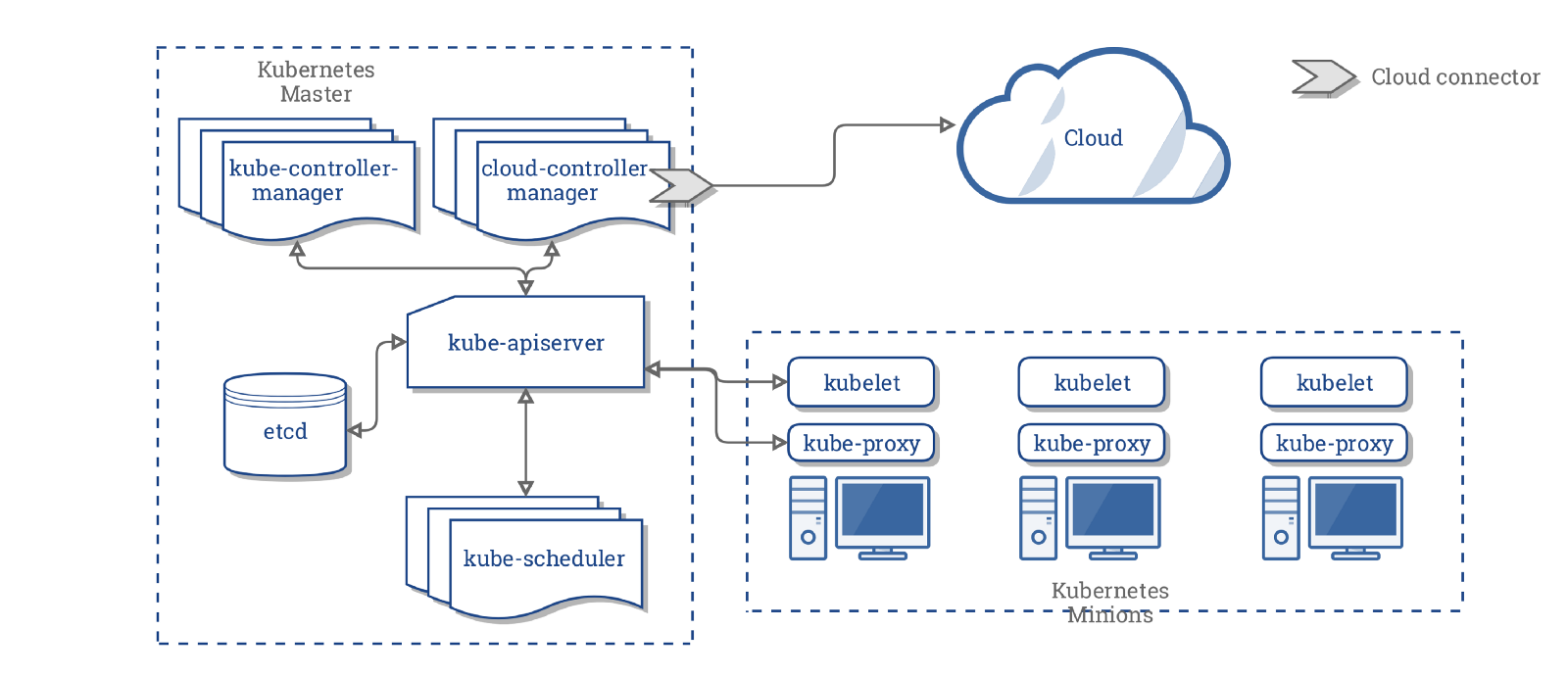Overview
Kubernetes, k8s, or kube, is an open source platform that automates container operations. It eliminates most of the existing manual processes, which involve the deploying, scaling, and managing of containerized applications.
Components
Kubernetes Master
The Kubernetes master is responsible for maintaining the desired state for your cluster. When you interact with Kubernetes, such as by using the kubectl command-line interface, you’re communicating with your cluster’s Kubernetes master.
The “master” refers to a collection of processes managing the cluster state. Typically these processes are all run on a single node in the cluster, and this node is also referred to as the master. The master can also be replicated for availability and redundancy.
The Kubernetes Master is a collection of three processes that run on a single node in your cluster, which is designated as the master node.
Those processes are:
- kube-apiserver: the single point of management for the entire cluster. The API server implements a RESTful interface for communication with tools and libraries. The
kubectlcommand directly interacts with the API server. - kube-controller-manager: regulates the state of the cluster by managing the different kinds of controllers.
- kube-scheduler: schedules the workloads across the available nodes in the cluster.
Kubernetes Nodes
The nodes in a cluster are the machines (VMs, physical servers, etc) that run your applications and cloud workflows. The Kubernetes master controls each node; you’ll rarely interact with nodes directly.
Each individual non-master node in your cluster runs two processes:
- kubelet, which communicates with the Kubernetes Master.
- kube-proxy, a network proxy which reflects Kubernetes networking services on each node.
Objects
The basic Kubernetes objects are as follows:
- Pod is the smallest deployable unit on a Node. It’s a group of containers which must run together. Quite often, but not necessarily, a Pod usually contains one container.
- Service is used to define a logical set of Pods and related policies used to access them.
- Volume is essentially a directory accessible to all containers running in a Pod.
- Namespaces are virtual clusters backed by the physical cluster.
There are a number of Controllers provided by Kubernetes. These Controllers are built upon the basic Kubernetes Objects and provide additional features. The Kubernetes Controllers include:
- ReplicaSet ensures that a specified number of Pod replicas are running at any given time.
- Deployment is used to change the current state to the desired state.
- StatefulSet is used to ensure control over the deployment ordering and access to volumes, etc.
- DaemonSet is used to run a copy of a Pod on all the nodes of a cluster or on specified nodes.
- Job is used to perform some task and exit after successfully completing their work or after a given period of time.
References
| Reference | URL |
|---|---|
| A friendly introduction to Kubernetes | https://medium.freecodecamp.org/a-friendly-introduction-to-kubernetes-670c50ce4542 |
| Kubernetes Concepts | https://kubernetes.io/docs/concepts/ |
